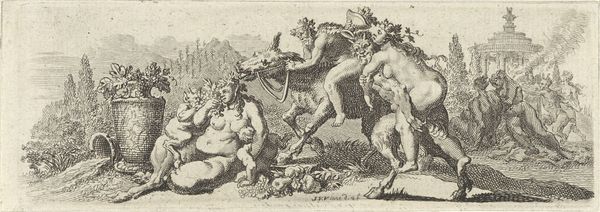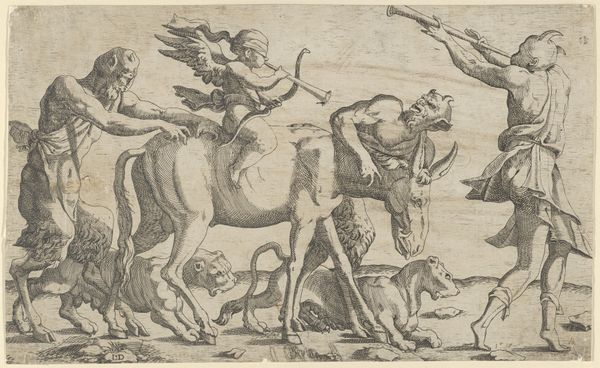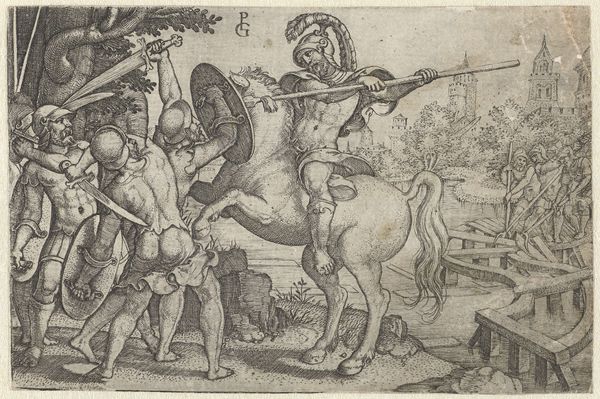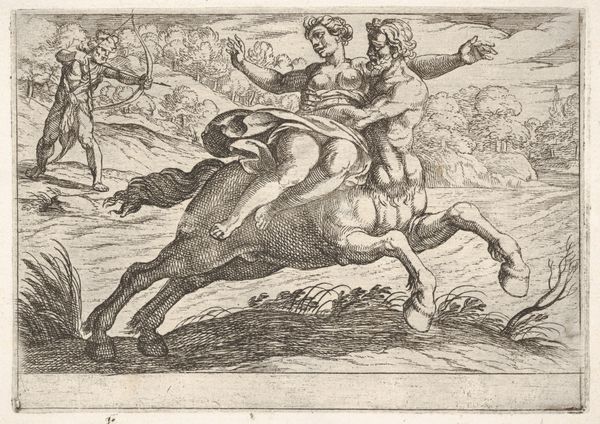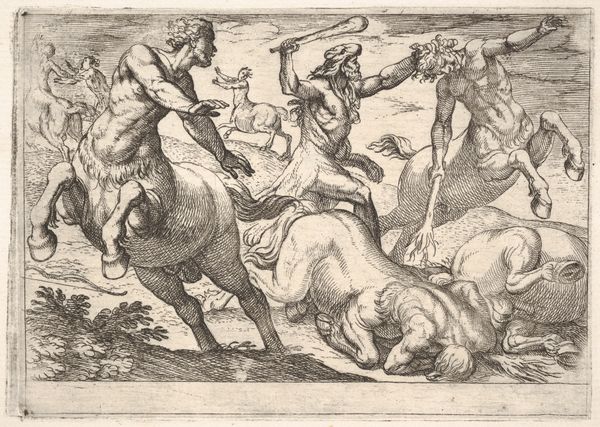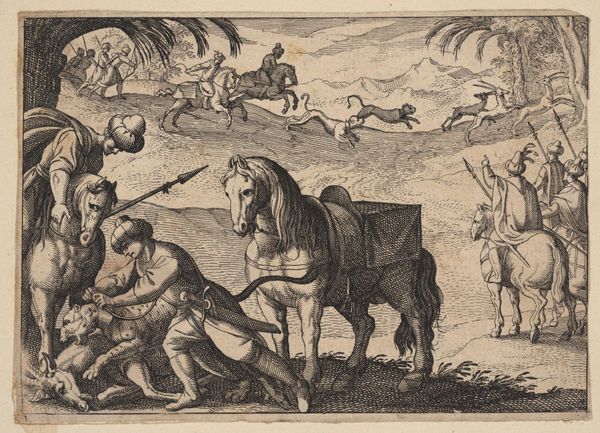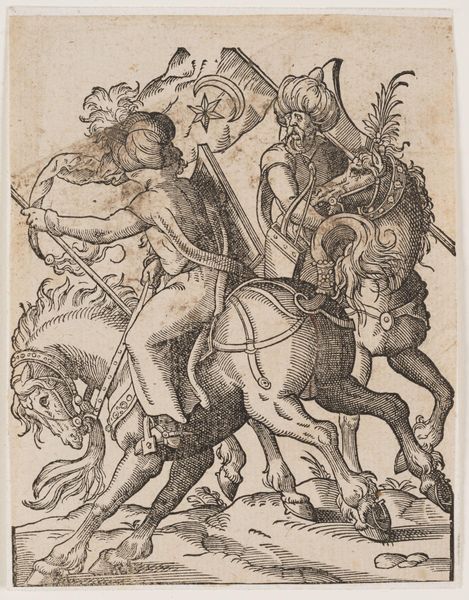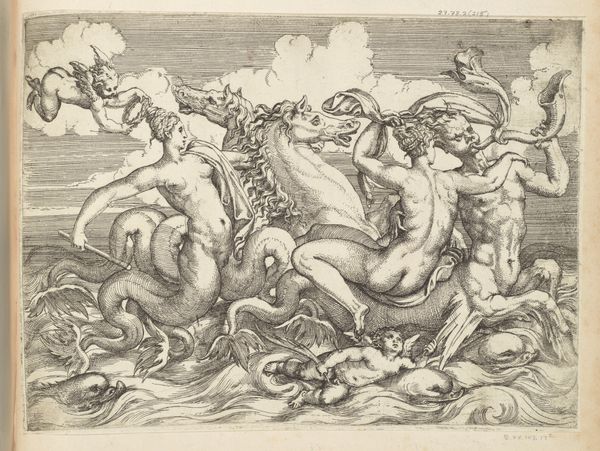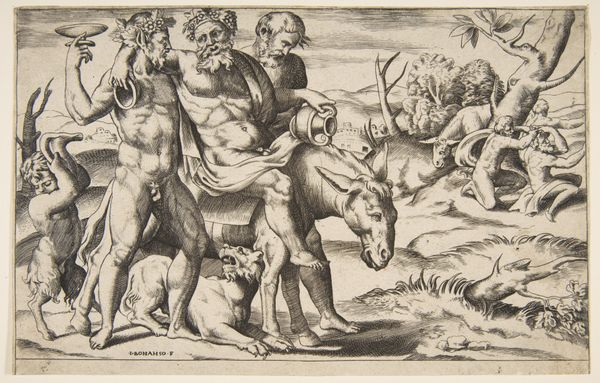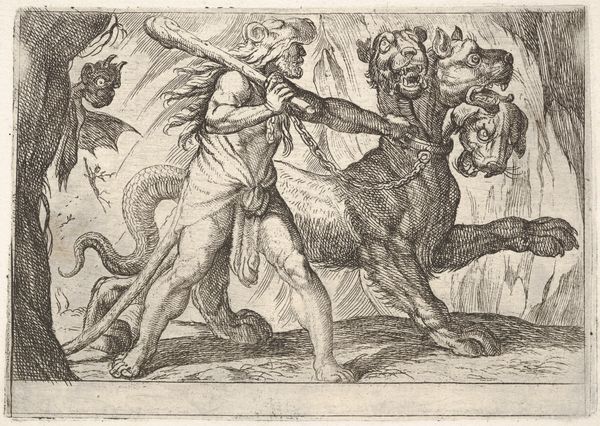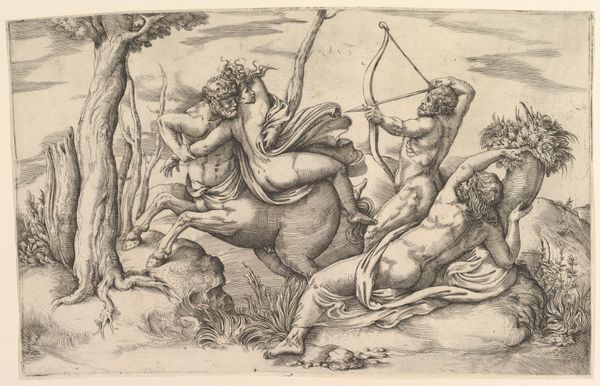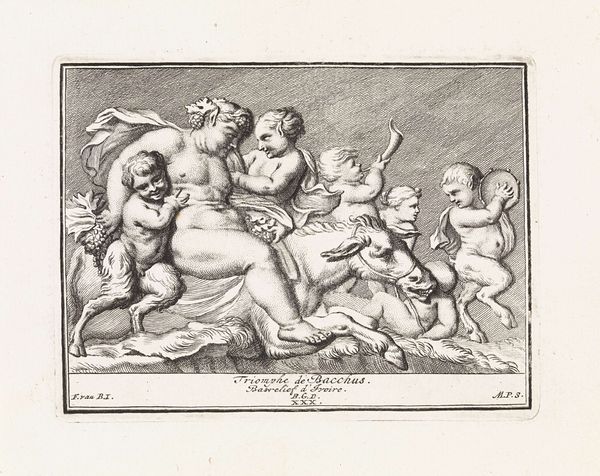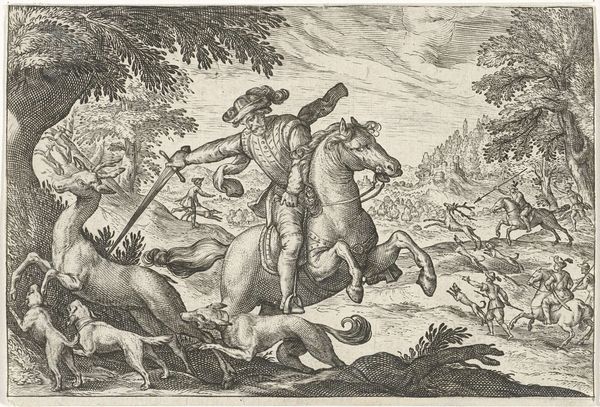
Twee satyrs zetten Silenus op een balkende ezel Possibly 1510 - 1562
0:00
0:00
print, engraving
#
allegory
#
pen drawing
# print
#
pen illustration
#
pen sketch
#
figuration
#
personal sketchbook
#
pen-ink sketch
#
pen work
#
sketchbook drawing
#
italian-renaissance
#
sketchbook art
#
engraving
#
fantasy sketch
#
initial sketch
Dimensions: height 112 mm, width 175 mm
Copyright: Rijks Museum: Open Domain
Curator: This engraving, “Two Satyrs Putting Silenus on a Balking Donkey,” attributed to Marcantonio Raimondi, and created sometime between 1510 and 1562, is part of the Rijksmuseum’s collection. Editor: It’s chaotic! The drunken figure being hoisted onto that poor donkey looks like he's about to slide right off. There's a palpable sense of imbalance. Curator: Raimondi, heavily influenced by Raphael, presents us with a scene steeped in Bacchic revelry, showcasing the inebriated Silenus, often associated with wisdom and prophecy when sober, here utterly dependent and comical. Considering that many artists depicted Silenus, I wonder about the context. Does Raimondi intend a commentary about power structures through depicting the tutor of Dionysus reduced to a spectacle? Editor: Absolutely. The image is overloaded with signifiers: the donkey, of course, as a symbol of stubbornness and foolishness, further compounded by Silenus's association with both wisdom and drunkenness, his followers, and the pastoral setting itself. It brings to mind similar themes of disinhibition and temporary inversions of the social order. We see a very popular trope, which I wonder whether audiences felt were transgressive or cathartic? Curator: Indeed. The satyrs themselves are important symbols. Here, they aren't merely playful woodland creatures but active participants in a kind of power dynamic, almost mockingly assisting Silenus. We might examine the implications of these actions. Who profits? Are they the butt of the joke? And let’s look at their masculinity. I question to what extent these bodies perform expectations or invert the typical classical physique. Editor: It all speaks to the complex iconography surrounding Silenus. This scene—this unceremonious mounting—highlights the instability of supposed wisdom when unbound from temperance. Curator: Ultimately, what's revealed might not just be Silenus's inebriation, but also the volatile societal undercurrents rippling beneath the seemingly idyllic surface. Editor: And within that complex symbolic interplay, Raimondi leaves us with a resonant, albeit uncomfortable, reflection on human fallibility.
Comments
No comments
Be the first to comment and join the conversation on the ultimate creative platform.
